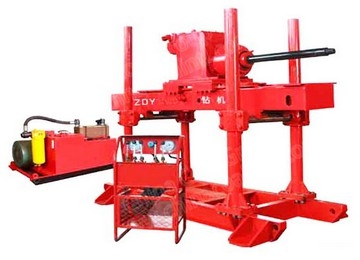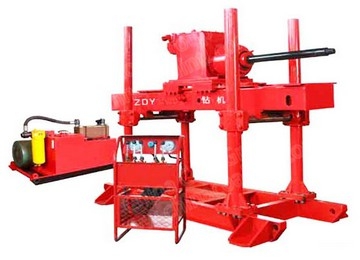Overview
A
drilling rig is a complex machine designed to bore holes into the earth's subsurface for various applications, including oil and gas extraction, water well drilling, mineral exploration, and geotechnical investigations.
Drilling rigs come in multiple configurations, such as land-based, offshore (jack-up, semi-submersible, drillship), and mobile units, each tailored to specific operational requirements.

Types of
Drilling rigs
Land Rigs – Used for onshore drilling, typically mounted on trucks or trailers for mobility.
Offshore Rigs – Designed for underwater drilling, including:
Jack-up Rigs – Elevated platforms with extendable legs.
Semi-submersibles – Floating rigs stabilized by pontoons.
Drillships – Ship-shaped vessels with dynamic positioning.
Directional & Horizontal Rigs – Equipped for non-vertical drilling.
Portable Rigs – Compact units for shallow wells and environmental sampling.
Key Components
Mast/Derrick – Structural support for lifting drill pipes.
Drawworks – Hoisting system for raising/lowering the drill string.
Rotary Table/Top Drive – Rotates the drill string.
Mud Pumps & Circulation System – Circulates drilling fluid (mud) to cool, lubricate, and remove cuttings.
Blowout Preventer (BOP) – Safety device to control unexpected pressure surges.
Drill String & Bit – The cutting tool (e.g., PDC, roller cone) attached to drill pipes.
Power Generation – Diesel engines or electric motors for operations.
Drilling Rig Applications
Oil & Gas Exploration – Extracting hydrocarbons from reservoirs.
Water Wells – Providing groundwater access.
Mining & Geothermal – Mineral prospecting and renewable energy projects.
Construction & Geotechnical – Foundation testing and soil sampling.
Advancements & Technology
Modern rigs incorporate automation, IoT sensors, and AI-driven analytics to enhance efficiency and safety. Innovations like hybrid power systems (reducing emissions) and automated drillfloor robotics are transforming the industry.
Rigs must comply with regulations (e.g., API, OSHA) to minimize spills, emissions, and workplace hazards. Technologies like closed-loop mud systems and BOP redundancy improve eco-friendliness.


